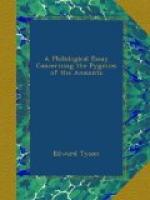“Behold the sidhe before your eyes:
It is manifest to you that it is a king’s
mansion,
Which was built by the firm Dagda;
It was a wonder, a court, a wonderful
hill.”
[Footnote A: Tumuli at New Grange. Trans. Roy. Irish Academy, XXX. 1.]
But certain of the expressions in this are evidently to be taken figuratively, since Mr. Coffey states, in connection with this and other quotations, that their importance consists in that they establish the existence at a very early date of a tradition associating Brugh na Boinne, the burial-place of the kings of Tara, with the tumuli on the Boyne. The association of particular monuments with the Dagda and other divinities and heroes of Irish mythology implies that the actual persons for whom they were erected had been forgotten, the pagan traditions being probably broken by the introduction of Christianity. The mythological ancestors of the heroes and kings interred at Brugh, who probably were even contemporarily associated with the cemetery, no doubt subsequently overshadowed in tradition the actual persons interred there.
Finally, it seems that the fairy hills may have been actual dwelling-places, fortified or not, of prehistoric peoples. Such were no doubt some of the Picts’ houses so fully dealt with by Mr. MacRitchie, though Petrie[A] seems to have considered that many of these were sepulchral in their nature. Such were also the Raths of Ireland and fortified hills, like the White Cater Thun of Forfarshire.
[Footnote A: Anthrop. Mems., ii. 216.]
The interior of the mound-dwellings, as described in the stories, is a point to which allusion should be made. Sometimes the mound contains a splendid palace, adorned with gold and silver and precious stones, like the palace of the King of Elfland in the tale of “Childe Rowland.” In the Scandinavian mound-stories we find a curious incident, for they are described as being capable of being raised upon red pillars, and as being so raised when the occupants gave a feast to their neighbours. “There are three hills on the lands of Bubbelgaard in Funen, which are to this day called the Dance-hills, from the following occurrence. A lad named Hans was at service in Bubbelgaard, and as he was coming one evening past the hills, he saw one of them raised on red pillars, and great dancing and much merriment underneath."[A] This feature is met with in several of the stories collected by Keightley, and is made use of in Cruikshank’s picture, which forms the frontispiece to that volume. Lastly, in a number of cases there is not merely a habitation, but a vast country underneath the mound. An instance of this occurs in the tale of John Dietrich from the Isle of Ruegen. Under the Nine-hills he found “that there were in that place the most beautiful walks, in which he might ramble along for miles in all directions, without ever finding an end of them, so immensely large was the hill that the little people lived in, and yet outwardly it seemed but a little hill, with a few bushes and trees growing on it."[B]




